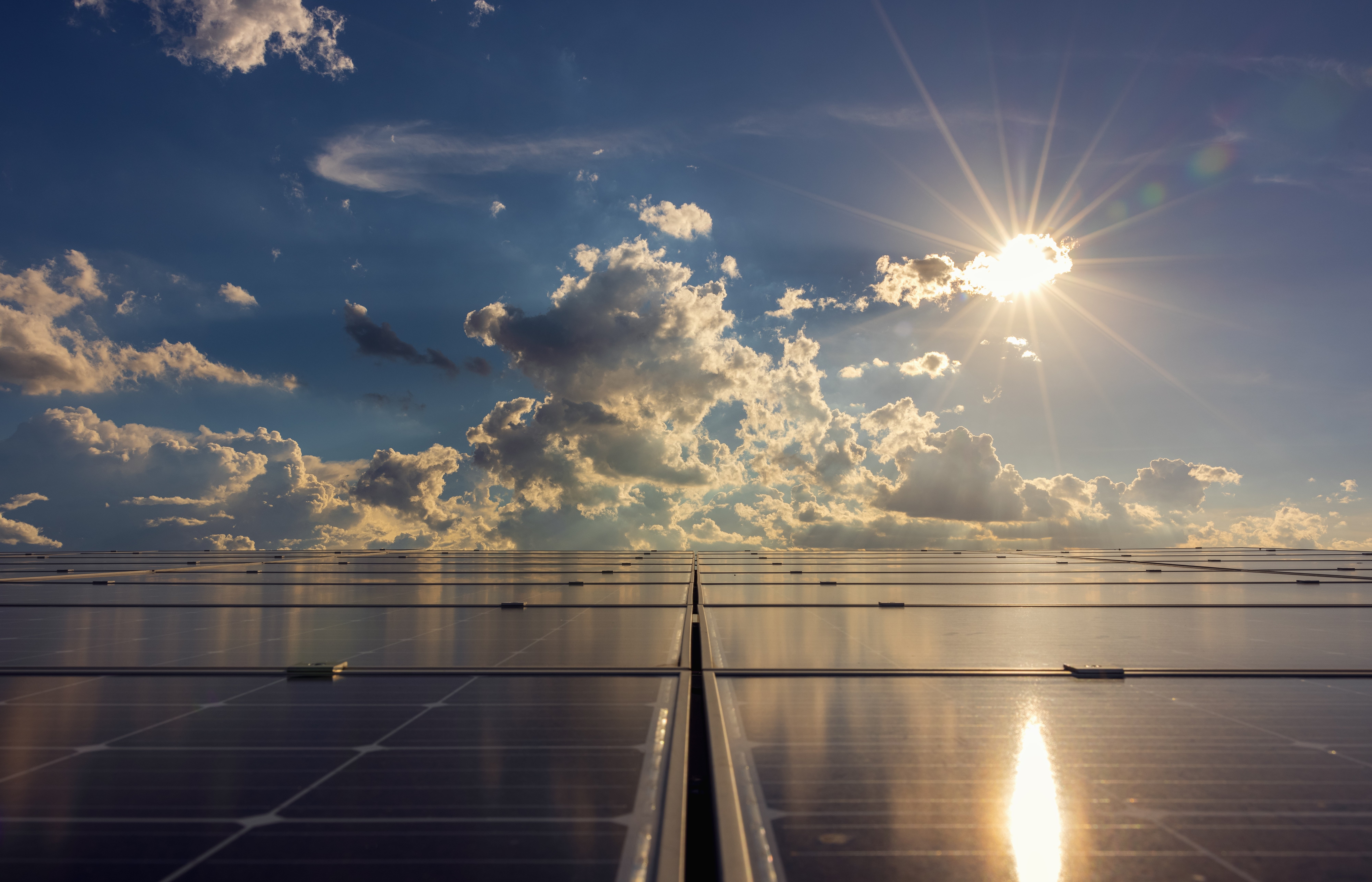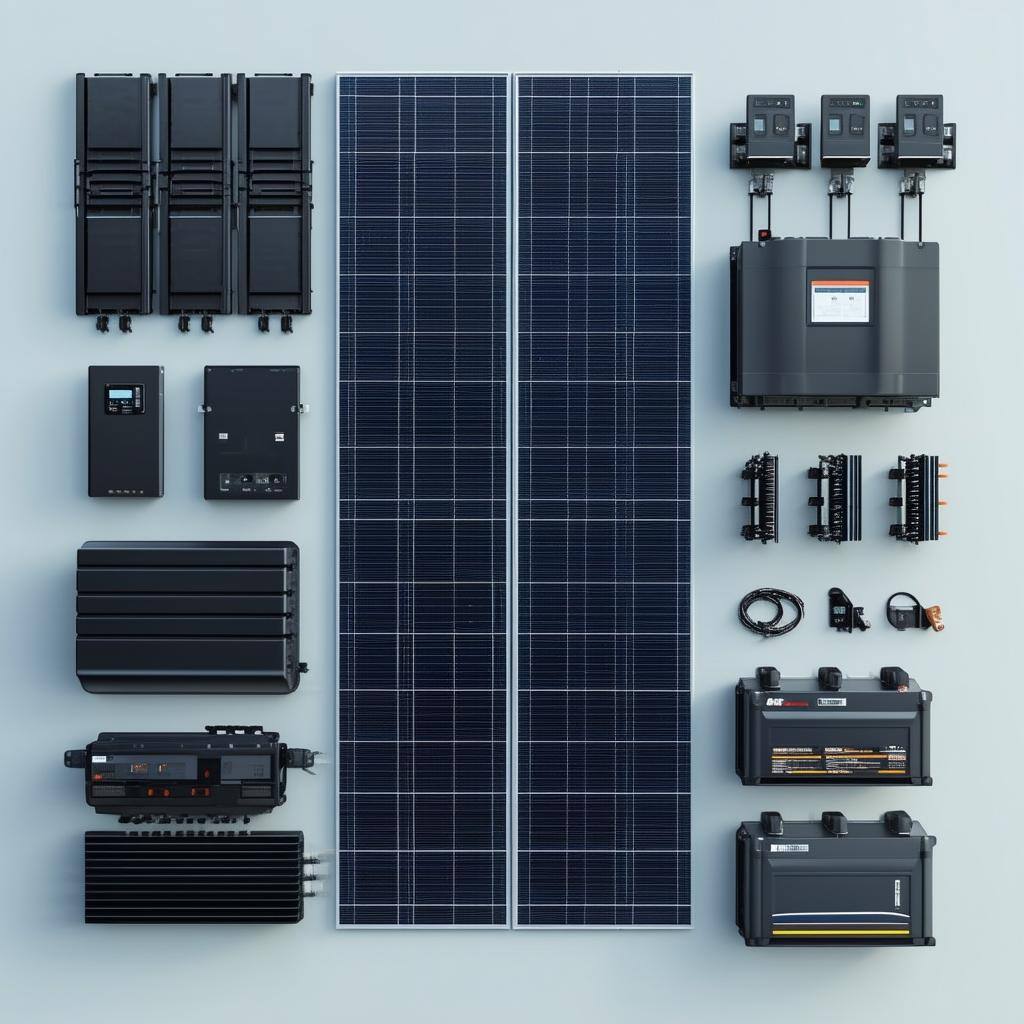The Science Behind Solar Panels: How Sunshine Powers Your Home
How Does Solar Energy Work? A Simple Explanation Ever wondered how solar panels sitting on rooftops manage to turn sunlight into electricity? Let’s...
6 min read
Peter Swenson : Oct 28, 2024 4:49:32 PM

Switching to solar energy is an exciting decision, but it’s also a big investment, so knowing the financial benefits upfront is essential. That’s where ROI (Return on Investment) and the payback period come in. These two concepts help you understand how much you’ll save over time and when you’ll break even on your solar investment. Essentially, ROI and payback period are like a financial roadmap that shows you the journey from initial investment to long-term savings.
In this guide, we’ll dive into everything you need to know to estimate your solar savings. We’ll start by breaking down the calculations, then go over the main factors that influence your savings and how you can make the most of your investment.
The main goal of any investment is to make money or, in this case, save money. When it comes to solar energy, the initial costs can seem high, but that’s because this is a long-term investment. You’re spending money now to save money over the next 20 to 30 years.
So, why focus on ROI and payback period? Here’s a quick look at what each term means and why they’re important:
ROI (Return on Investment): ROI measures the profitability of your solar system. It shows how much money you’ll save in total, compared to what you spent, usually expressed as a percentage.
Payback Period: This is the time it takes for your savings to cover the initial cost of your system. Once you reach this point, your solar system has “paid for itself,” and the energy savings continue.
Knowing your ROI and payback period is crucial because they tell you how financially worthwhile your solar investment will be. For example, if your system has a payback period of 8 years, and it’s designed to last 25 years, you’ll get roughly 17 years of savings after reaching break-even.
Calculating solar savings isn’t as complicated as it may sound. Once you break it down, it’s simply about looking at your electricity rates, system size, and sun hours. Let’s walk through each step in estimating how much you’ll save.
The first step in estimating solar savings is to understand how much you’re currently spending on electricity. Look at your monthly electricity bills, especially during peak and off-peak seasons, to get an accurate average.
Example: If you’re paying $120 per month on average, your annual cost is $120 x 12 = $1,440.
Your electricity rate is what your utility company charges you per kilowatt-hour (kWh) of electricity used. This rate can usually be found on your utility bill and is essential for calculating solar savings.
Example: Let’s use a rate of $0.13 per kWh for our calculations.
Now, let’s figure out how much energy your solar system will produce. This depends on the size of the system (measured in kilowatts or kW) and the number of sunlight hours available to generate power in your area.
System Size: Most residential solar systems are between 5 and 10 kW. For this example, let’s use a 6 kW system.
Sun Hours: The average number of peak sunlight hours varies by location. Let’s say your area receives around 5 peak sun hours per day on average.
Annual Energy Production = System Size (kW) x Sun Hours per Day x 365 Days
Example: With a 6 kW system and 5 sun hours per day, the calculation is: 6 kW x 5 hours x 365 = 10,950 kWh per year
This means your 6 kW system should produce approximately 10,950 kWh of electricity per year.
Now that you know how much energy your system will produce annually, it’s time to calculate your savings. Multiply the energy production by your electricity rate.
Annual Savings = Annual Energy Production (kWh) x Electricity Rate
Example: Using 10,950 kWh and an electricity rate of $0.13 per kWh: 10,950 kWh x $0.13 = $1,423.50 per year
So, in this example, your solar system would save you about $1,423.50 per year on electricity costs.
The payback period is the time it takes for your solar savings to cover the initial cost of your system. Let’s go over the factors that impact the payback period.
The upfront cost of your solar system is a significant factor in determining the payback period. Typically, residential solar systems cost between $15,000 and $25,000 before incentives.
The less you spend upfront, the faster you’ll reach your break-even point. Taking advantage of incentives, rebates, and tax credits can also reduce the initial cost.
If you choose to finance your solar system instead of paying upfront, this will impact your payback period. Financing can spread the cost over several years, making it more affordable month-to-month, but it may extend the time it takes to break even.
Solar Loans: Loans allow you to own the system while making monthly payments. This option usually shortens the payback period because you’re eligible for tax credits and other savings.
Leases and Power Purchase Agreements (PPAs): With leasing and PPAs, you don’t own the system, so the payback period doesn’t apply in the same way. However, you’ll still save on energy costs.
Net metering is a billing system where you receive credits for excess electricity your system produces and sends back to the grid. This can significantly shorten your payback period because it allows you to offset more of your electricity costs.
However, net metering policies vary by state, so check your local regulations. In areas without full net metering, the payback period may be longer because you won’t get the same level of savings from excess energy production.
How you use electricity affects your payback period. Homes with high daytime energy use will see greater benefits from solar, as they’re more likely to use the power as it’s generated rather than relying on stored or grid power.
High Consumption: If you use a lot of electricity, especially during the day, you’ll see more savings, as you’ll rely less on grid power.
Low Consumption: If your energy use is lower than what your system produces, it may take longer to reach your payback period, especially if net metering isn’t available.
Utility rates tend to rise over time, typically by around 2-3% annually. As rates go up, your solar savings increase, meaning a shorter payback period. Calculating future rate increases can give you a more accurate estimate of long-term savings and ROI.
Most solar panels are designed to last 25 to 30 years. Once you’ve reached your payback period, you’re essentially generating “free” electricity for the remainder of the system’s life. Let’s take a closer look at how to estimate total savings and ROI over the long term.
To calculate lifetime savings, multiply your annual savings by the expected lifespan of your system.
Lifetime Savings = Annual Savings x System Lifespan (Years)
Example: Using the annual savings of $1,423.50, let’s calculate lifetime savings over 25 years: $1,423.50 x 25 = $35,587.50
In this example, the total savings over 25 years would be about $35,587.50.
ROI shows the percentage return on your investment over the system’s lifespan. Here’s how to calculate it:
ROI (%) = (Lifetime Savings - Initial Investment) / Initial Investment x 100
Example: If your initial investment was $18,000: ROI = ($35,587.50 - $18,000) / $18,000 x 100 = 97.7%
So, in this case, your ROI over 25 years would be 97.7%, almost doubling your initial investment.
Several online calculators can simplify the process of estimating solar savings, ROI, and payback periods. Let’s go over a few popular tools and how they work.
Many solar companies offer calculators on their websites. These tools are easy to use and typically only require basic information, like your location and average electricity bill.
The PVWatts Calculator by the National Renewable Energy Laboratory (NREL) is a comprehensive tool that estimates energy production and costs based on your location, system size, and electricity rates.
Solar-Estimate.org is another excellent tool that estimates savings, payback periods, and system size based on your energy usage and zip code. It even incorporates local solar incentives.
Some tools, like EnergySage, analyze your utility bills to create a customized solar estimate. These are great if you’re looking for a personalized approach to calculating solar savings.
Using one or more of these tools can give you a solid estimate of your solar savings, helping you make an informed decision.
Switching to solar energy is a long-term investment, and understanding your savings, ROI, and payback period is key to making a smart choice. Here’s a quick recap of what we covered:
ROI and Payback Period: Knowing your ROI and payback period helps you see the financial benefits of solar, including when you’ll break even and how much you’ll save over the years.
Calculating Solar Savings: Use your current electricity rates, system size, and sun hours to estimate how much you’ll save each year.
Factors Affecting Payback Period: Initial cost, financing, net metering, and consumption patterns all play a role in determining how quickly your system will pay for itself.
Long-Term ROI: With a lifespan of 25+ years, a solar system offers significant savings beyond the payback period, making it a sound financial investment.
Estimation Tools: Online calculators and tools make it easy to forecast savings, giving you a clear picture of what to expect.
With the right tools and a clear understanding of your savings, you can feel confident that your solar investment is a step toward long-term financial benefits and environmental impact. So go ahead, run the numbers, and see how solar can work for you!

How Does Solar Energy Work? A Simple Explanation Ever wondered how solar panels sitting on rooftops manage to turn sunlight into electricity? Let’s...

Welcome to the world of solar energy! Whether you're just exploring the possibilities or seriously considering installing a solar power system, it's...

If you’re considering going solar, you’ve probably heard that it’s a great way to save money and help the environment. But here’s the catch: the...